Male Pattern Baldness
There are 7 classes of Male Pattern Baldness. The good news is – hair restoration techniques are available to help men in almost all of these stages.


Toronto Hair Transplant Surgeons are internationally known for our pioneering work in hair transplantation.
Male Pattern Baldness | Male Hair Loss & Thinning Solutions – THTS
Introduction to Hair Loss
Hair loss, or alopecia, is a widespread concern that affects both men and women across the globe. While there are many different types of hair loss, the most common in men is male pattern baldness, also known as androgenetic alopecia. This condition is typically marked by a receding hairline and thinning hair on the crown, eventually forming a characteristic horseshoe-shaped pattern of hair loss. In contrast, female pattern hair loss usually presents as a general thinning of hair across the scalp, rather than distinct bald patches. Male pattern baldness affects approximately 30 to 50% of men by age 50. Both forms of pattern baldness can have a significant impact on self-confidence and quality of life, making it important to understand the underlying causes and available solutions for thinning hair.
Male Pattern Baldness
There are 7 classes of Male Pattern Baldness. Male pattern baldness is also known as male pattern alopecia, a condition influenced by genetic and hormonal factors. The condition can start after puberty and develops gradually over time. The good news is – hair restoration techniques are available to help men in almost all of these stages.
Many men experience male pattern baldness, with a receding frontal hairline often being the first noticeable sign.
Why Men Care About Hair Loss
For a lot of men, when they lose hair—especially experiencing scalp hair loss—it doesn’t just affect their self-esteem but can also become a real source of embarrassment. Whenever hair loss is mentioned, they might get very uptight and want to get off the subject as fast possible. The psychosocial impact is often trivialized or ignored by those unaffected by hair loss. But why is this?
Well there’s no one reason but a big part of the problem is that hair loss is not considered to be a topic that’s out of bounds when it comes to playful mocking amongst friends. In other words, a guy who’s losing his hair might be very sensitive about it but has to put on a brave face when he’s around his friends and they bring it up.
This can turn something that’s already quite a touchy issue into something that they’re deathly afraid of discussing. This is why a lot of guys who are losing their hair resort to wearing a baseball cap for the majority of the time – they simply don’t want to deal with the comments.
It’s not just because of remarks from other people that hair loss can cause embarrassment though. Guys can very easily become self-conscious about their hair loss even if nobody has ever said anything to them about it. Because hair is such a fundamental part of our appearance, it can cause a lot of stress when it starts to thin out.
Not every guy reacts to hair loss negatively of course, but plenty do and for those guys they will often do anything they can to halt it.
What can be done about hair loss?
When it comes to treating hair loss, there are 3 main options available. The first is to use FDA approved treatments for male pattern baldness. These include finasteride (Propecia) and minoxidil (Rogaine). Finasteride treatment is effective for many men, helping to slow hair loss and promote hair regrowth, resulting in more hair and improved hair density. Topical minoxidil, an FDA approved treatment, is applied directly to the scalp and works by enhancing blood flow to stimulate hair growth. Topical minoxidil and oral finasteride are the only two treatments currently approved by the Food and Drug Administration (FDA) for androgenetic alopecia in men. A systematic review of medical treatments for male pattern baldness supports the efficacy of these options.
Secondly, there are non-surgical options such as low-level laser therapy, a type of laser treatment that can stimulate hair growth by activating hair follicles, and platelet-rich plasma (PRP).
There are also other treatments available, including emerging medical treatments and alternative therapies, but their effectiveness varies and some lack substantial evidence.
Lastly is a hair transplant. Hair transplant techniques have come on leaps and bounds since the dark days of the infamous “plug” transplants of the 70s and early 80s. Nowadays, individual hair follicles can be taken from the back and sides of the patient’s head and transplanted to the thinning areas, allowing for great coverage and a completely natural looking head of hair. Hair transplantation involves removal of hair from the occipital scalp and re-implantation into the bald vertex and frontal scalp.
Diagnosing Male Pattern Baldness
Diagnosing male pattern baldness is a straightforward process that usually begins with a physical examination of the scalp. A healthcare professional will look for classic signs such as a receding hairline, thinning hair, and the typical male pattern of hair loss. Most of the time, special tests aren’t needed to diagnose male pattern baldness. In addition to examining the scalp, your doctor will ask about your family history, as hereditary factors play a major role in pattern baldness. They may also inquire about any medical conditions or medications that could be contributing to your hair loss. By gathering this information, your doctor can accurately diagnose male pattern baldness and recommend the most appropriate next steps.
Importance of Early Diagnosis
Recognizing the early signs of male pattern baldness is crucial for achieving the best possible outcomes. Early diagnosis allows for timely intervention, which can help prevent further hair loss and, in some cases, even stimulate new hair growth. Taking action at the first signs of thinning hair or a receding hairline can make a significant difference, as early treatment options are often more effective at preserving hair density and delaying complete baldness. Addressing hair loss early not only helps maintain your appearance but can also boost your confidence and overall well-being.
Male Pattern Baldness
Male pattern baldness, also known as androgenic alopecia, is one of the most common hair disorders affecting men. Genetic factors and other risk factors play a significant role in the development of male pattern baldness.
The images below show the different categories of male pattern baldness or hair loss as well as the hair restoration and hair replacement options suitable for each category.
Our Results

Toronto Hair Transplant Surgeons are internationally known for our pioneering hair transplantation work.
Our huge archive is here to help you see what we can do for you. Use the link below to view some sample cases.
Class 1 Male Pattern Baldness
Men with what is considered to be Class 1 hair loss, which may correspond to early androgenetic alopecia, have not lost any appreciable amount of hair, so surgical hair restoration is not likely the solution.
Medical treatments for early androgenetic alopecia, including medications and topical treatments such as Finasteride or Minoxidil, as well as PRP and low-level laser therapy options, are available.
Class 2 Male Pattern Baldness
Men with Class 2 hair loss are usually experiencing the beginnings of frontal temporal hair erosion that may become quite severe in 5-10 years. Hair transplantation is usually a viable option. In consultation, Dr. Huber, or Dr. Alexander will determine whether or not you are a candidate for hairline micrografts. They will take into account your age, family history (including the possibility that variations in the androgen receptor gene may influence susceptibility to male pattern baldness), amount of hair loss, type and texture of hair, and amount and quality of donor hair available in developing their prognosis and treatment plan.
Class 3 Male Pattern Baldness
Men with Class 3 hair loss are experiencing accelerating hair loss that often becomes severe in 5-7 years. Hair transplantation is usually an option. In consultation, Dr. Huber, or Dr. Alexander will determine whether or not you are a candidate for hair restoration procedures, and if you are, will discuss those options with you.
THTS Gallery


Familiarize yourself with our layout before you come in.
Visit the gallery to take a peek at our Oakville based clinic layout and surgical rooms.
Class 4 Male Pattern Baldness
Men with Class 4 hair loss are experiencing substantial frontal temporal recession and, often, a pronounced and ever enlarging “bald spot” toward the back of the head. Some men choose natural, permanent Hair transplantation. In consultation Dr. Huber, or Dr. Alexander will determine whether or not you are a candidate for hair restoration procedures and based on your existing hair, which procedure is best suited for the desired results.
Class 5 Male Pattern Baldness
Men with Class 5 hair loss are experiencing a very severe frontal temporal recession and, often, a pronounced and ever-enlarging “bald spot” toward the back of the head. Some men choose natural, permanent hair transplantation. In consultation, Dr. Huber, or Dr. Alexander will determine whether or not you are a candidate for hair restoration procedures and based on your existing hair, which procedure is best suited for the desired results.
Class 6 Male Pattern Baldness
Men with Class 6 hair loss are experiencing a very severe frontal temporal recession and an extremely large “bald spot” toward the back of the head. Based on the severity and extent of the hair loss, your existing hairline and donor areas will be assessed in consultation with our doctors at the Toronto Hair Transplant Surgeons. They will examine your hair loss and work with you to explore the best options for hair restoration if you are a suitable candidate for a procedure.
Class 7 Male Pattern Baldness
Men with Class 7 hair loss may be candidates for some transplantation procedures. With a limited donor site, usually, only the hairline can be recreated leaving the crown area bald.
Top Causes Of Hair Loss
Some men are quick to blame their parents for that thinning crown or the balding scalp. Although genetics are a big factor in men’s hair loss, there are a variety of other causes of hair loss in men. Hair loss occurs due to a combination of genetic, hormonal, and environmental factors. Male pattern baldness is also considered a risk factor for certain health conditions, with studies showing an increased risk of prostate cancer and cardiovascular disease in affected men.
Exercise and Hormones
Exercising is good for our heart, and our waistline, but is high-resistance training good for our hair? Sadly, that warrior regiment may be causing a spike in testosterone, which can ultimately result in hair loss. Male sex hormones, such as testosterone and dihydrotestosterone (DHT), play a key role in male pattern baldness. Androgens stimulate hair growth in areas like the beard, axilla, and pubic regions, but in the scalp, they can contribute to hair follicle miniaturization and hair loss.
The same goes for Performance Enhancing Drugs (PED’s) and testosterone for muscle gain. If used when suffering from any sort of hereditary male pattern hair loss, it becomes a double threat. It’s been well documented that testosterone in the body is converted to DHT dihyrotestosterone.
DHT is a bully to hair follicles susceptible to baldness and is the primary trigger that causes hair follicles to miniaturize beyond repair—causing receding hairlines and crown balding. Dermal papilla cells and insulin like growth factor play important roles in regulating hair follicle health and the miniaturization process. Follicular miniaturization occurs in relation to the subcutaneous tissue, and the effects of DHT are mediated by the androgen receptor and androgen receptors present in hair follicles.
Your Scalp and Autoimmune Diseases
Scalp inflammation is the body’s response to intruding microorganisms. The most common contributing factor to this is the overproduction of sebum. When your hair roots get clogged it can result in itchiness or flakiness.
Inflammation of the scalp has been scientifically shown to interrupt and impair healthy hair growth. Overgrowth of fungus or yeast at the scalp (that feed on the natural oils or sebum your scalp secretes naturally) can turn into redness and irritation.
And of course, there’s alopecia areata, a condition where the body’s immune system mistakenly attacks it’s own hair follicles. When this occurs, other cells or tissues important to hair growth and maintenance become causalities. This results in hair loss of various kinds including cicatricial alopecia and telogen effluvium (which occurs when hair’s growth cycle is disrupted). It’s a complete interruption of the hair fibre production. In women, female pattern hair loss is often associated with polycystic ovary syndrome, a hormonal disorder that can increase the risk of hair thinning.
Smoking and Exhaustion
We all know it and have known it, cigarettes kill and they also affect one’s hair, slowly. Every inhalation of any tobacco product creates a stranglehold on the tiny blood vessels in your skin, starving those skin cells—and hair follicles—of vital nutrients like oxygen etc and leaving toxins in its place. Before you know it, the effects of smoking will be evident on your skin and in your hair.
As important as it is to avoid toxins in your life it’s also imperative that you get enough sleep. Most people need at least 7 hours of sleep per night, which is necessary for the body and mind for repair. Science suggests that when our biologic clocks become disrupted, our hair follicle growth cycles may become affected too.
Hair Follicle Health
Healthy hair growth starts at the root—literally. Hair follicles are tiny structures within the scalp responsible for producing each strand of hair. These follicles are highly sensitive to hormonal changes, especially androgens, which can influence the growth phase and thickness of your hair. When hair follicles are exposed to certain hormones, they may shrink, leading to thinner, weaker hairs and eventually hair loss. To support strong, healthy hair follicles, it’s important to maintain a balanced diet rich in essential nutrients, manage stress levels, and avoid excessive use of harsh chemicals or heat styling tools. Taking care of your hair follicles is a key step in promoting robust hair growth and minimizing hair thinning.
Living with Hair Loss
Coping with hair loss can be a challenging journey, but there are many ways to manage and even improve the situation. Seeking medical treatment is often the first step—options like hair transplantation, low level laser therapy, and other safe and effective treatments can help restore hair growth and confidence. Alongside medical interventions, adopting healthy lifestyle habits can make a real difference. Eating a nutritious diet, staying active, and managing stress all contribute to better hair health. Practicing gentle hair care—using mild shampoos, avoiding harsh chemicals, and protecting your hair from heat and sun—can also help preserve the hair you have. Remember, you’re not alone in this experience, and with the right approach, it’s possible to regain both your hair and your self-assurance.



